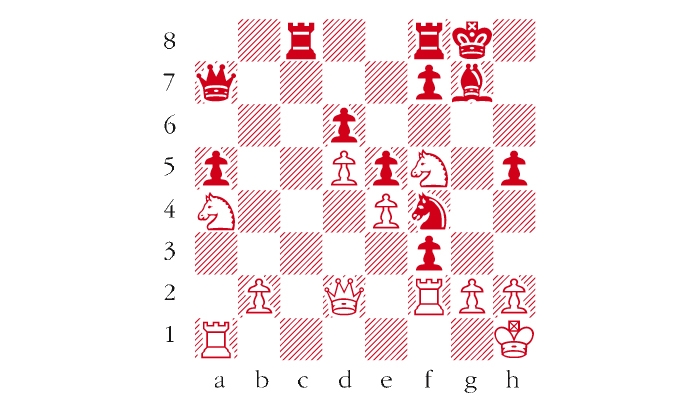Richard Réti is one of the most fascinating figures in the history of chess thought. The author of two seminal books, Modern Ideas in Chess and Masters of the Chessboard, Réti was an expert in simultaneous blindfold chess, successfully taking on many opponents at one and the same time. In terms of his theories and games, his assertion that the centre need not be occupied by pawns must have seemed the chess equivalent of Dada to the classically minded grandmasters of his day, such as Tarrasch, Teichmann and Rubinstein. At the time it was dubbed ‘Hypermodern’ by Savielly Tartakower.
Réti’s successes at the significant tournaments of Kaschau 1918, Amsterdam 1920, Gothenburg also 1920 and Teplitz-Schonau 1922, seemed to presage at least a challenge for the world title, but while developing his revolutionary ideas on central control for white, Réti somehow lost the ability to defend with black. At the great tournament of New York 1924, for example, he scored seven wins out of ten against the world’s elite, with the white pieces, but conversely lost the same total of games as black.
This week, the game which won the New York brilliancy prize with notes based on those by Thomas Engqvist in the new book Réti: Move by Move (Everyman Chess).
Réti-Bogoljubow: New York 1924; Réti Opening
1 Nf3 d5 2 c4 e6 3 g3 Nf6 4 Bg2 Bd6 5 0-0 0-0 6 b3 Re8 7 Bb2 Nbd7 8 d4 c6 9 Nbd2 Ne4 10 Nxe4 dxe4 11 Ne5 The most active continuation. 11 Nd2 f5 12 c5 Bc7 13 Nc4 also gives White an edge, but the move Réti played is preferable. 11 … f5 12 f3 exf3 13 Bxf3 It is important to take back with a piece. Capturing with the pawn is the worst option, since after 13 exf3 Nxe5 14 dxe5 Bc5+ 15 Kh1 b5!, the c8-bishop is liberated with a timely … Ba6. 13 … Qc7 14 Nxd7 Bxd7 15 e4 e5 It is really not necessary to do anything in the centre at this moment. Either 15 … Rad8, or 15 … Rf8 followed by … Rae8, completes Black’s development in a harmonious way. 16 c5 Bf8 17 Qc2 A simple developing move, threatening both e- and f-pawns simultaneously while maintaining the tension. (see diagram 1) 17 … exd4 It is a horrible mistake to open up the position, since White’s pieces are far more active on the files and diagonals. 18 exf5 Rad8 19 Bh5 Re5 20 Bxd4 Rxf5 Capitulation. Black had to try 20 … Rd5 21 Qc4 Kh8 22 Bf3 Rxd4 23 Qxd4 Bxf5 with a pawn for the exchange. 21 Rxf5 Bxf5 22 Qxf5 Rxd4 23 Rf1 Rd8 Or 23 … Qe7 24 Bf7+ Kh8, when White wins with the interference 25 Bd5!, preventing … Rd8, which means Black loses a piece; for example, 25 … g6 (or 25 … Qf6 26 Qc8) 26 Qxf8+ Qxf8 27 Rxf8+ Kg7 28 Rg8+ and 29 Bc4. 24 Bf7+ Kh8 25 Be8 Black resigns (see diagram 2) A very nice and unusual move, exploiting the weak piece on f8 as well as the back rank.
Raymond Keene
Hypermodern

issue 21 January 2017




Comments